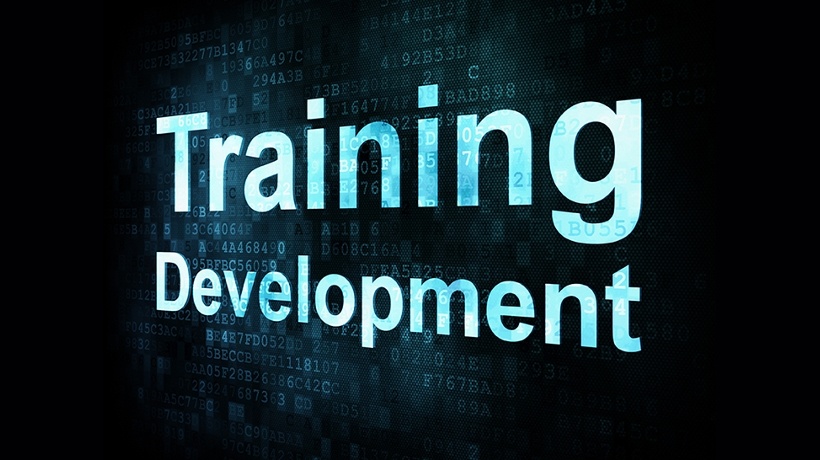How To Achieve Training Success After It Ends
Recently, I wrote an article for this site entitled "6 Important Techniques to Training Success Before it Event Begins". Due to the positive feedback and encouragement I received, I thought I would write a follow-up piece looking at things to ensure long-term success, that is, what companies can do AFTER training sessions have been completed to help leave a lasting impact on learning and employee development. In the spirit of always progressing, now I also have seven tips in total.
1. Properly Evaluating Training – Have the Objectives Been Met?
The first thing that is necessary following the end of the initial training is to evaluate whether it – at least at an entry level – worked. It's important here to look back at the pre-determined training objectives. Training objectives serve two main purposes, the first being that they define the exact knowledge that will be transferred during the training, and it answers the “how” question as well, i.e. in a successful training session. If developed properly, they are both specific and measurable, and will tell employers what they want their employees to do, to do better, or to stop doing. So with that said, after the training has been completed, learning officers and team managers should be able to utilize the training objectives and have an initial evaluation of the effectiveness of the training. Did the participants learn what you intended? Can the learner transfer what they learned to apply to a direct skill or task? Can the specific action which you needed to teach be completed now independently by the worker? All these are important questions to answer.
2. Get Employee Feedback – Both Initial and Continuing
One relatively simple and useful way to make that initial evaluation is to approach the learner and get his/her direct feedback. You can do this directly and individually, both immediately after the completion of the training session, as well as checking in with them periodically to ask after a period of time what their personal evaluations are of how much information from the training they retained and currently apply to their skills. Alternatively, you can send out surveys to ask the learners to fill out to assess their satisfaction in the training and to what extent they thought it was successful and useful.
Ask employees questions such as, "do you understand what was said?" "Do you still have any specific questions?" "Are you now more prepared to perform your tasks more quickly and easily?" You can even have the worker summarize the key elements of what he learned during the session(s).
However, don't forget to follow up with employees from time to time to get hear what they have to say. The most important thing to remember is that training is an ongoing process, not a one-time thing, and that the importance of honest employee feedback is extremely valuable. Remember that training, beyond just being an organizational tool, is very much a personal process that plays an important role in overall employee engagement within a company.
3. Get the Worker To Apply What They've Learned QUICKLY
Don't waste a lot of time in getting learners to apply what they've learned directly to a specific desired performance task. There are a few benefits to this. Firstly, the message is immediately reinforced to the learner that what learned is not something theoretical or general and just "good to know". Rather, the training knowledge is directly relevant to their performance and daily tasks. Too often training managers are faced with employees who question, "What's in it for me?" Immediate application of these new skills helps to answer that question.
In addition, you don’t want to wait long between the training and use of that knowledge for the very simply reason that the longer time goes by, the more likely learners will forget what they learned. Finally, this also aids the managers in getting an early evaluation of the training's success. Why wait? If something didn't entirely work, you should know that right away.
4. Close Skills Monitoring – Getting Updates with Managers, Checking Metrics, etc.
In addition to forming an initial assessment of training success through direct feedback and immediate application, even more important is close and continued monitoring of skills development over time. Many times, results don't show themselves immediately, and frankly, often it's a better that managers see their employees continue to grow over the long-term, as opposed to an initial, but fleeting short-term impact.So long-term monitoring can be done through a variety of different methods. Direct feedback from employees as mentioned above, as well as from team leaders and managers. What do they think? Is there a clear sign of performance improvement and efficiency? What do they think are still points of weakness or confusion? Communication here is of value to everyone. Don't forget to also use metrics and statistics in your analysis. Can you show a certain percentage of improvement of speed, or fewer mistakes? How many times is the employee calling the helpdesk for assistance? Finally, be sure – through your communication with managers and workers – that there might not be additional factors beyond the level of training that might be influencing performance levels before coming to conclusions.
5. Technology
Know that beyond the initial training sessions itself, there are technological aids to continued learning and skills enhancement. The technology revolution, like in every field, has an enormous impact on employee development. Managers should encourage their workers to continue learning over the internet, through participation on social media sites, online videos, blogs and forums. Self-guidance technologies such as WalkMe, for example, integrated into the company software, can guide users as they work through direct, live demonstration, which assists them complete even the most complex tasks. WalkMe and similar technologies allow the learner to reinforce his initial training over the long-term, constantly learning as they do his/her job. Hands on learning like this is more commonly proficient for the average person, but also makes concrete the practical application of the learning in ways videos or lectures never could.
Finally, in recent years and surely to continue in the years ahead, continued learning both at work and at home over mobile devices such as smartphones and tablet have the potential to revolutionize employee learning, if companies invest and incorporate these technologies into their overall learning strategy.
6. Managers Should Serve as Examples
Another important tip is to make sure managers and team leaders lead by example. Employees will look toward their bosses for inspiration and positive reinforcement when they are trying new things that might be initially unfamiliar to them. This is especially true with younger employees. Therefore, it's a good idea for managers to use the same techniques in order to set an example for their younger workers. When applicable, don't be afraid to call the employee over to your computer periodically just to show him/her again that you are performing a similar task utilizing what they have been taught during training. Beware that without managers setting such an example, employees are liable to begin doubting not only their own competence, but also how useful or truly important and useful this new learning is, and will disregard it due to poor examples being set.
7. Remember Again that Training is Not an End, But a Beginning
I mentioned this in the earlier article, but I can't stress it enough. Remember that training is ONLY THE START of what you hope will be consistent knowledge and performance growth for your employees. Know that – long after the initial training sessions are over – there are a number of ways to encourage your employees to constantly learn new skills and upgrade existing ones. In addition to technological tools and consistent feedback, consider granting employees days away from the office at conferences or other settings to enhance skills.
In conclusion, please know that the most successful companies, who get the best long-term employee growth and sustained results, recognize training as just the start of a process of continuous learning, long after the initial sessions have ended.









